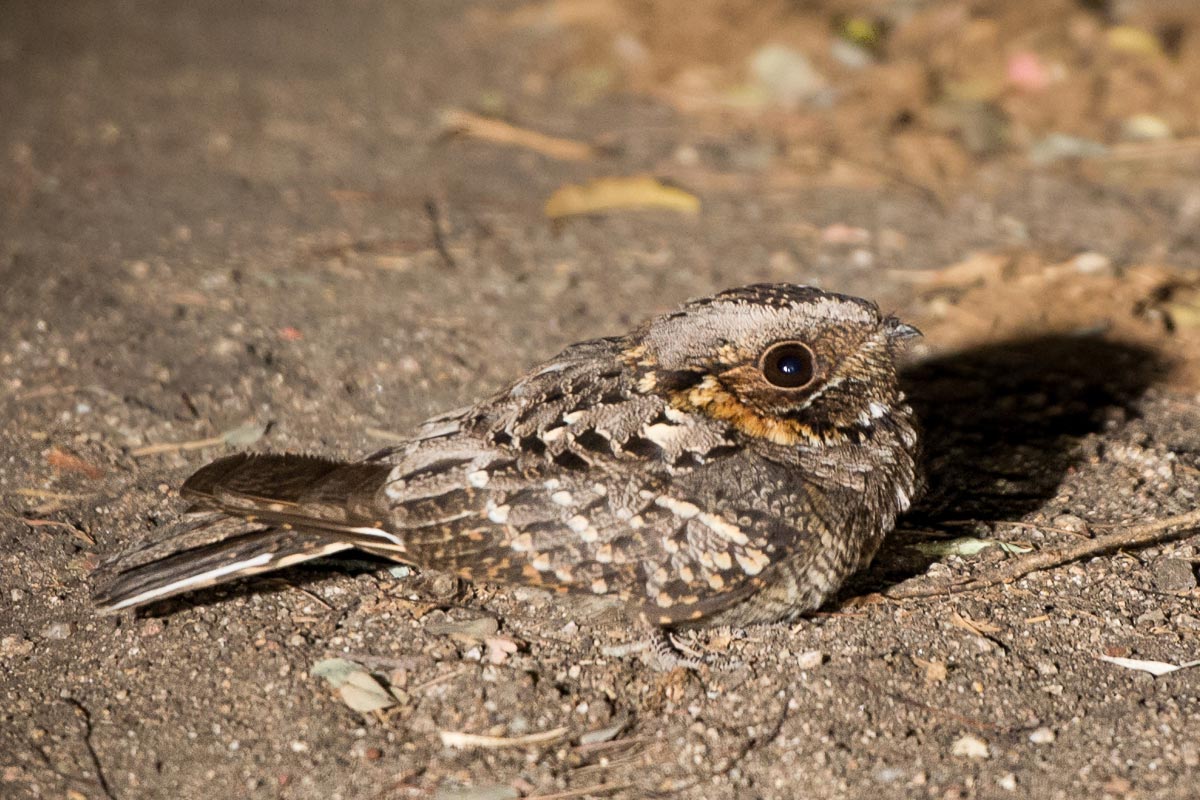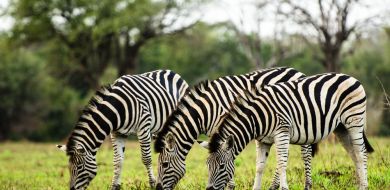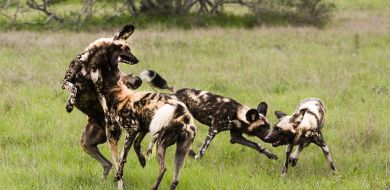Sabi Sabi Wild Facts: The Nightjar
on Dec 14, 2014While on an evening game drive at Sabi Sabi, your ranger may find a very well-camouflaged bird sitting on the warm sand right in the middle of the road - and as the vehicle gets closer the bird will fly up, away from the vehicle's lights. This bird is a Nightjar. This photograph, taken by Bush Lodge ranger Rico Demetrio, is of a Fiery Necked nightjar, the most common of the species.
Nightjars are a species of nocturnal or crepuscular birds which are found in most countries of the world except in the Arctic or Antarctic. Nightjars can be found throughout Africa, south of the Sahara in grasslands, forests, woodlands, wetlands or bushveld. There are seven different species found in South Africa, and no less than 5 of these species can be found at Sabi Sabi.

Nightjars have distinctive whistling calls, with a "churring" sound. The Fiery Necked Nightjar in the photograph has a call which sounds like "Good Lord Deliver Us". Some say the name nightjar comes from the jarring sound of the call, while others believe the name comes from the species' wide "jar-like" mouths. The various species are very difficult to identify, as they are all medium sized birds with similar camouflage type colouring and patterning which resembles bark and leaves.
Most nightjars migrate seasonally to some degree, and there are even some intercontinental species, including the European Nightjar which migrates from Europe to South Africa. They are all solitary birds, hunting most actively at dusk and dawn. Like other nocturnal birds, nightjars have exceptionally large eyes containing a high concentration of light sensitive rods which assist them with hunting in low light conditions.

Nightjars are very agile in flight, able to hunt and catch aerial insects such as moths in those huge mouths. They also eat beetles, spiders and various other insects. The shape of a bird's beak almost always determines the type of food they will eat. All nightjars have small beaks, very large gapes and modified feathers in the form of sensitive bristles, which assist them in scooping up insects and channelling them into their mouths when in flight.
Taking care of their feathers is so important that some birds have developed special grooming tools and techniques. Nightjars have serrated grooming combs on the middle claw of each foot called "pectens", which are used for preening - cleaning off parasites and dust - and also for straightening their bristles.
Breeding season for nightjars in the Sabi Sabi area is from August to December. The birds don't have nests and will lay usually two eggs on bare ground between leaf litter, under bushes, or in debris under trees. The eggs are incubated by the female during the day and by the male at night. The incubation and fledgling period varies depending on the species, but most are incubated for around 2 weeks, with chicks developing plumage and starting to fly at between 18 - 20 days. The parents will, however, take care of them for several weeks thereafter.






